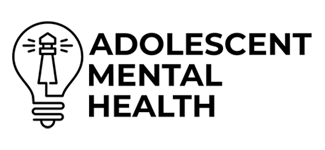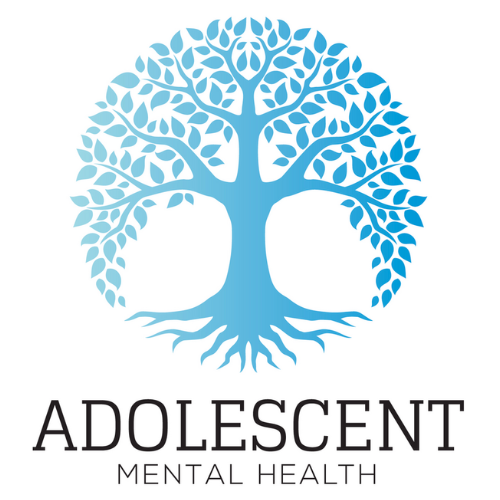Youth Mental Health Facts
The emotional and behavioral health of adolescents is a public health priority in the United States. Mental health conditions can affect school attendance, daily activities, and the overall well-being of school students. This article reviews current youth mental health statistics, common mental health disorders, risk factors, and effective solutions for improving access to mental health care for adolescents.
Overview of Mental Health in Adolescents
Adolescents face major changes during a critical stage of adolescent development. Many mental disorders, such as depressive disorder, anxiety disorders, and attention-deficit/hyperactivity disorder, begin before age 18. These issues affect emotional health, physical health, and academic performance.
Importance of Addressing Youth Mental Health
Recognizing and responding to mental health concerns early helps reduce mental health challenges in adulthood. Mental health services for adolescents support their mental and physical well-being and reduce the risk of substance abuse, suicide attempts, and educational difficulties.
Prevalence of Mental Health Conditions

Statistics on Youth Mental Health Disorders
According to the Centers for Disease Control and Prevention (CDC) and the National Institute of Mental Health, about 1 in 5 adolescents experiences a mental health condition each year. Mental health data from the Web-based Injury Statistics Query show increasing emergency visits related to mental health crisis events.
- Depressive episode and major depression affect millions of teens.
- Suicide death rates among youth have increased in recent years.
- Rates of mental health therapy use remain low due to access issues.
Commonly Diagnosed Conditions
Common behavioral health conditions in teens include:
- Depression and depressive disorder
- Symptoms of anxiety and Anxiety disorders
- ADHD and attention deficit disorder
- Conduct disorder and autism spectrum disorder
Contributing Factors
Social and Environmental Stressors
Adverse Childhood Experiences (ACEs) like emotional abuse, interpersonal violence, neighborhood violence, and sexual violence increase the risk of emotional disorders. School settings, child welfare systems, and juvenile justice involvement also play a role.
Impact of Technology on Mental Health
Online bullying, electronic bullying, and pressure from social media can lead to depressed mood, social withdrawal, and symptoms of depression or anxiety.
Role of Family Dynamics
A troubled family dynamic or a history of abuse in childhood can affect a teen’s emotional well-being. Family therapy can help support adolescents and improve relationships with peers and caregivers.
Consequences of Ignored Mental Health Issues

Increase in Emergency Department Visits
The CDC’s National Center for Injury Prevention and Control reports a rise in youth visits for mental health crisis and substance use disorders. Adolescent drug overdose deaths and the drug overdose death rate are growing concerns.
Rising Suicide Rates among Teenagers
Suicide rates are increasing among teens, especially female students. Many report having a suicide plan or experiencing intense emotional difficulties. According to National Recommendations for Depicting Suicide, open discussion and access to the 988 Suicide and Crisis Lifeline are critical.
Long-Term Impacts on Development and Well-being
Untreated mental health conditions can disrupt Healthy Development, reduce life satisfaction, and increase risk for substance use disorders, involvement with illicit drugs, or long-term health behaviors that harm physical well-being.
Access and Barriers to Mental Health Services
System-Level Challenges
Barriers to care include a lack of mental health professionals, insufficient health insurance coverage, and gaps in behavioral health care funding. The Mental Health Services Administration has highlighted these as national concerns.
Geographic and Economic Disparities
Teens in rural or underserved communities often lack access to licensed therapists, health care providers, or school-based mental health services. Many receive no treatment due to cost or lack of services.
Stigma and Its Impact on Access
Stigma surrounding mental illness continues to prevent teens from seeking help. Open discussion about mental health issues and sharing stories through platforms like Share Generation can encourage support.
Prevention and Early Detection
Importance of Early Intervention
Responding early to signs of emotional disorders and developmental disorders prevents worsening of symptoms. Identifying symptoms of depression, anxiety, or behavior problems early leads to better outcomes.
Strategies for Early Detection in Schools
Implementing actionable strategies in school settings—like mental health screenings and teacher training—can help. Involving school counselors, crisis counselors, and youth peer advocates supports students in distress.
Role of Parents and Caregivers
Caregivers can look for signs of emotional health struggles, support mental well-being, and connect with health care professionals for guidance. Promoting open communication is key.
Treatment and Support Strategies

Role of Educational Institutions
Schools can deliver mental health treatment, provide classroom accommodations, and promote social-emotional learning to strengthen resilience. They also serve as key locations for care in schools.
Contributions of Healthcare Providers
Mental health care providers deliver therapy and medication support. Collaboration between schools and healthcare for teens improves continuity of care.
Integrating Mental Health Services in Communities
Organizations like Compass Health Center, Charlie Health, and programs at the Yale Center for Health & Learning Games provide community-based care options that align with the Committee on Adolescent Health Care Services.
Resources for Different Stakeholders
Support for Adolescents
Access to confidential mental health counseling, online tools, peer support, and information from platforms like Share Evidence-Based Practices Resource Center helps troubled teens feel supported.
Guidance for Parents and Caregivers
Educational resources from the U.S. Department of Health and Human Services and the Department of Health and Human Services provide tips on identifying mental health symptoms and seeking care.
Tools for Educators and Trainers
Teachers can use tools from the Journal of Adolescent Health and training programs to better understand mental health needs and how to support students.
Fostering a Supportive Environment
Importance of Awareness and Education
Education reduces stigma and promotes better understanding of behaviours for health, emotional well-being, and the impact of environmental health and infectious diseases on adolescents.
Encouraging Open Communication
Safe spaces at home and school help students talk openly about mental health challenges and get help early.
Building Resilience in Youth
Promoting physical activity, peer support, and healthy sexual behavior can protect youth from long-term risks.
Future Directions and Recommendations
Adopting a Multi-Faceted Approach
A combined strategy involving families, schools, and providers is needed to improve the health of adolescents and the health of children across fragile settings.
Policy Changes and Advocacy
Advocacy for increased funding, school programs, and access to mental health services is essential. Support from the Health Resources and Services Administration and United Hospital Fund can drive change.
Leveraging Technology for Support and Education
Technology plays a key role in delivering mental health care, especially during the COVID-19 public health emergency. Virtual platforms expand access to support in school-based mental health services and remote communities.
Adolescent Mental Health is dedicated to improving the lives of young people in Orange County. If you’re concerned about your teen’s emotional or behavioral health, contact us to learn how we can help.

FAQ's
Common mental health disorders in adolescents include depressive disorder, anxiety disorders, attention-deficit/hyperactivity disorder (ADHD), and conduct disorder. These conditions can affect school performance, social behavior, and emotional well-being. Early identification and mental health treatment can reduce long-term negative outcomes.
Risk factors for youth mental health issues include Adverse Childhood Experiences such as emotional abuse, family conflict, or exposure to interpersonal violence. Social media, online bullying, and pressure in school settings can also affect a teen’s mental well-being. Environmental factors like neighborhood violence and lack of support systems may increase the risk.
Schools can offer school-based mental health services such as counseling, early screening, and emotional learning programs. Educators and crisis counselors can help identify symptoms of depression, anxiety, and behavioral problems. Providing access to trained mental health professionals in schools improves outcomes and reduces the impact on academic success.
Parents should watch for changes in mood, sleep, appetite, or social behavior. Signs like depressed mood, social withdrawal, or talk of a suicide plan should be taken seriously. Connecting with a licensed therapist or health care provider ensures the teen receives proper mental health care. Open communication and support at home are also important for recovery.









